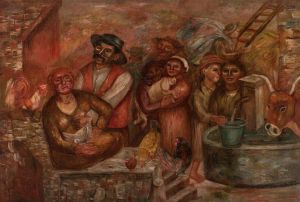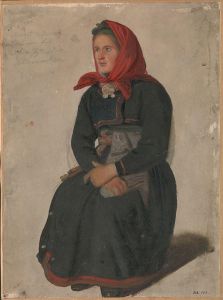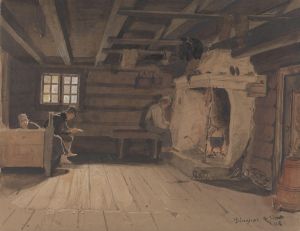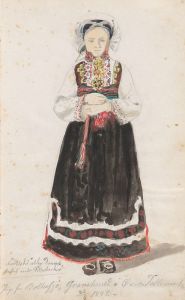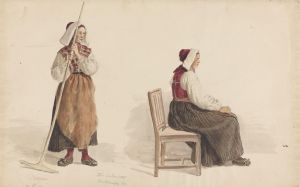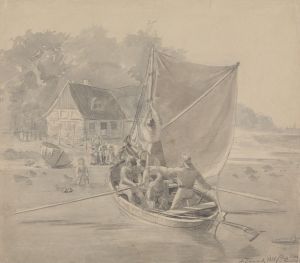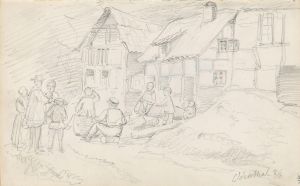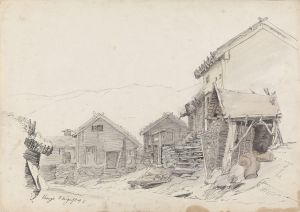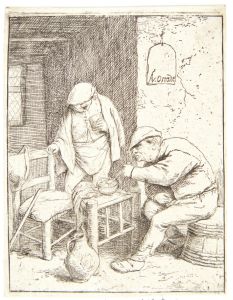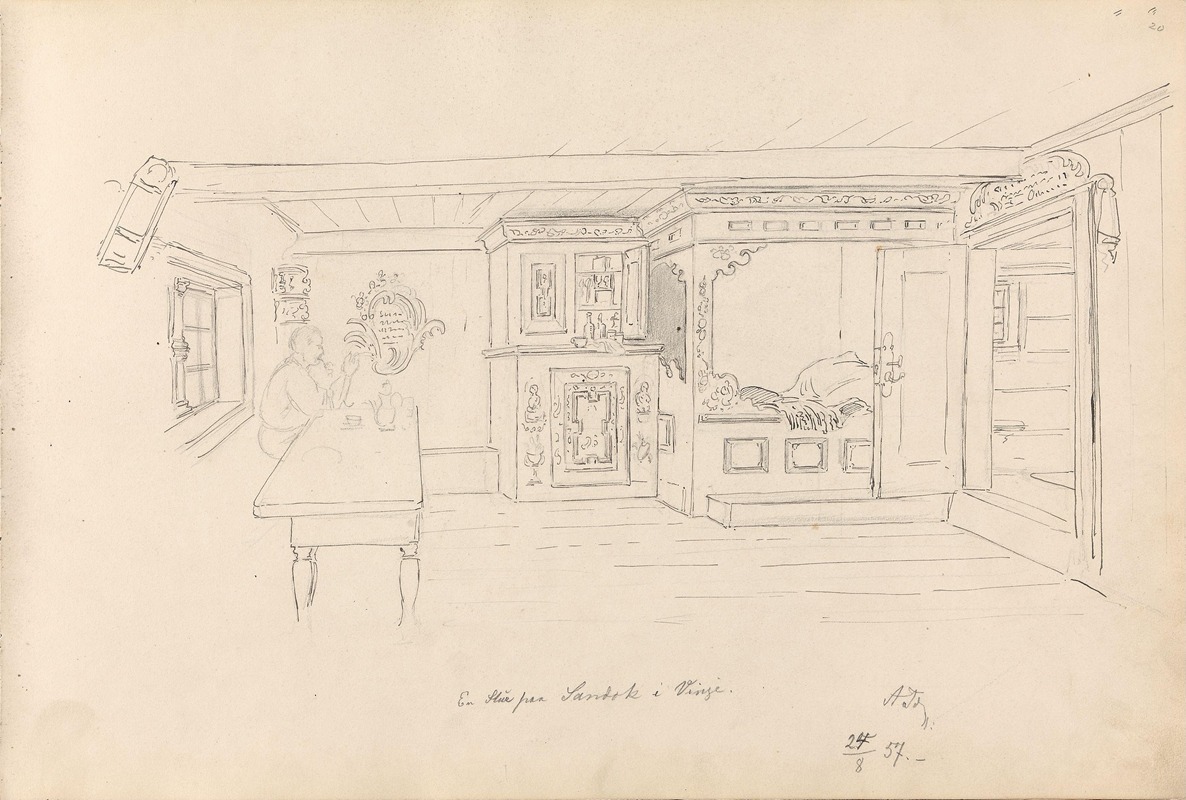
Bondestue, Sandåk i Vinje
A hand-painted replica of Adolph Tidemand’s masterpiece Bondestue, Sandåk i Vinje, meticulously crafted by professional artists to capture the true essence of the original. Each piece is created with museum-quality canvas and rare mineral pigments, carefully painted by experienced artists with delicate brushstrokes and rich, layered colors to perfectly recreate the texture of the original artwork. Unlike machine-printed reproductions, this hand-painted version brings the painting to life, infused with the artist’s emotions and skill in every stroke. Whether for personal collection or home decoration, it instantly elevates the artistic atmosphere of any space.
Adolph Tidemand was a prominent Norwegian painter known for his detailed and realistic depictions of rural life in Norway during the 19th century. One of his notable works is "Bondestue, Sandåk i Vinje," which translates to "Peasant Cottage, Sandåk in Vinje." This painting is a fine example of Tidemand's dedication to capturing the essence of Norwegian culture and the everyday lives of its people.
Adolph Tidemand was born on August 14, 1814, in Mandal, Norway. He studied art in Copenhagen and later in Düsseldorf, where he became associated with the Düsseldorf School of painting. This movement was known for its detailed and realistic style, which Tidemand adopted and adapted to suit his interest in Norwegian subjects. His works often focused on the lives of peasants, their customs, and their environments, providing a visual record of Norwegian rural life during a time of significant cultural and social change.
"Bondestue, Sandåk i Vinje" is a painting that exemplifies Tidemand's interest in the Norwegian peasantry and their way of life. The painting depicts the interior of a traditional Norwegian peasant cottage, known as a "bondestue." These cottages were typically simple, functional, and constructed from wood, reflecting the resources available in rural Norway. The setting of the painting, Sandåk in Vinje, is a location in the Telemark region, an area known for its rich cultural heritage and traditional architecture.
In the painting, Tidemand captures the warmth and coziness of the peasant home, with its rustic furnishings and the presence of family members engaged in daily activities. The attention to detail in the depiction of the interior, from the wooden beams to the textiles, showcases Tidemand's skill in rendering textures and materials. The figures in the painting are portrayed with a sense of dignity and authenticity, reflecting Tidemand's respect for the people he painted.
Tidemand's work, including "Bondestue, Sandåk i Vinje," played a significant role in the national romantic movement in Norway. This movement sought to celebrate and preserve Norwegian culture and identity at a time when the country was seeking independence and self-definition. By focusing on the lives of ordinary people and their traditions, Tidemand's paintings contributed to a growing sense of national pride and cultural awareness.
Throughout his career, Tidemand received numerous accolades for his work, and his paintings were exhibited widely in Europe. His ability to combine technical skill with a deep empathy for his subjects made his work highly regarded both in his lifetime and posthumously. Today, Tidemand's paintings are considered important cultural artifacts, offering insights into the history and traditions of Norway.
"Bondestue, Sandåk i Vinje" remains a testament to Adolph Tidemand's artistic vision and his commitment to documenting the lives of the Norwegian people. The painting is part of a larger body of work that continues to be studied and appreciated for its historical significance and artistic merit. Through his art, Tidemand has left a lasting legacy that continues to influence and inspire those interested in the cultural history of Norway.






